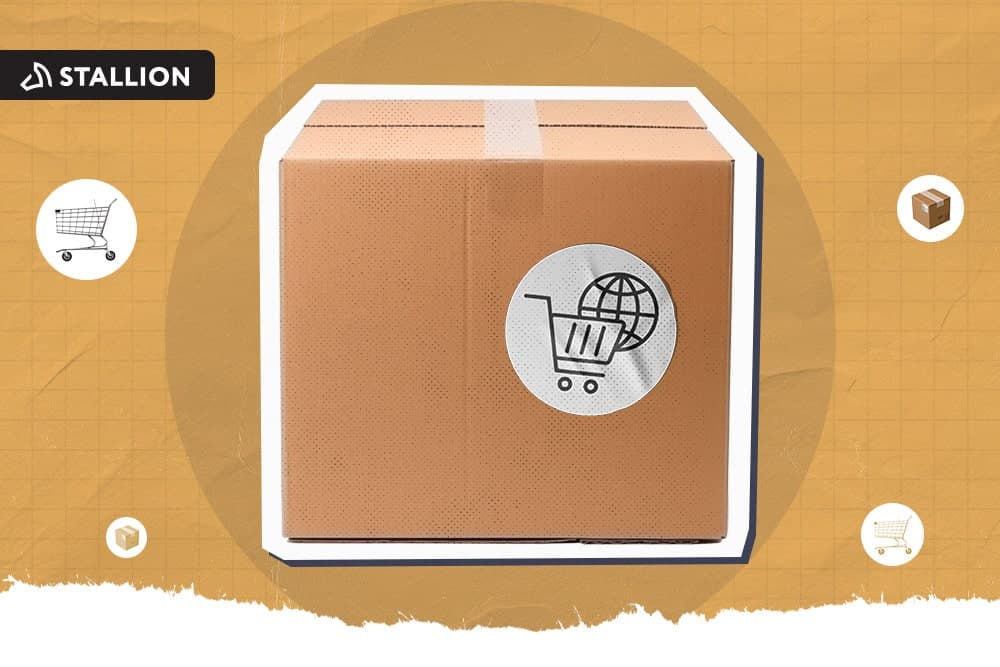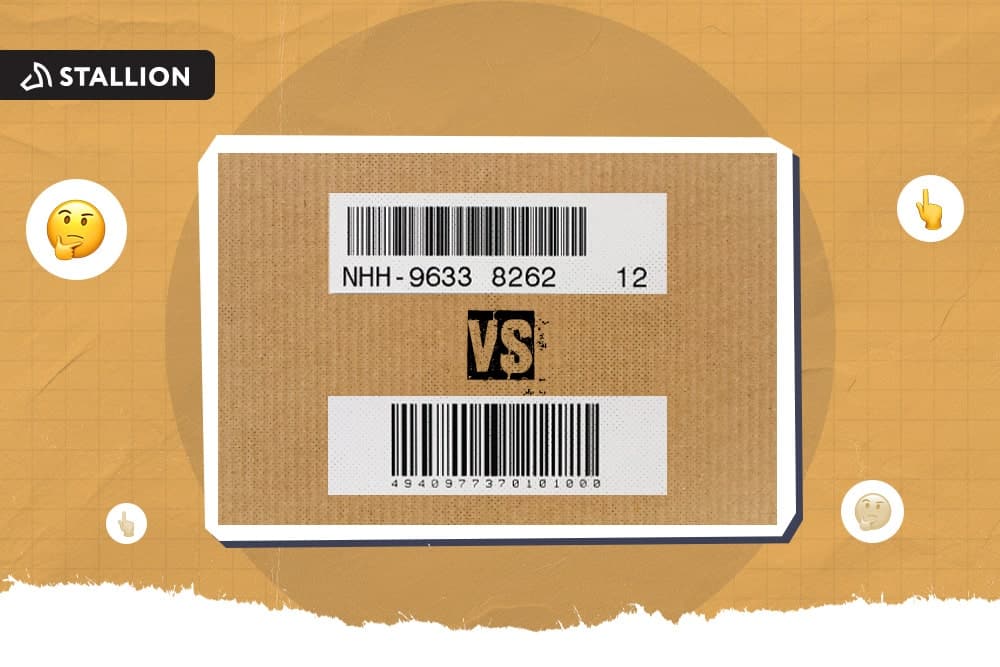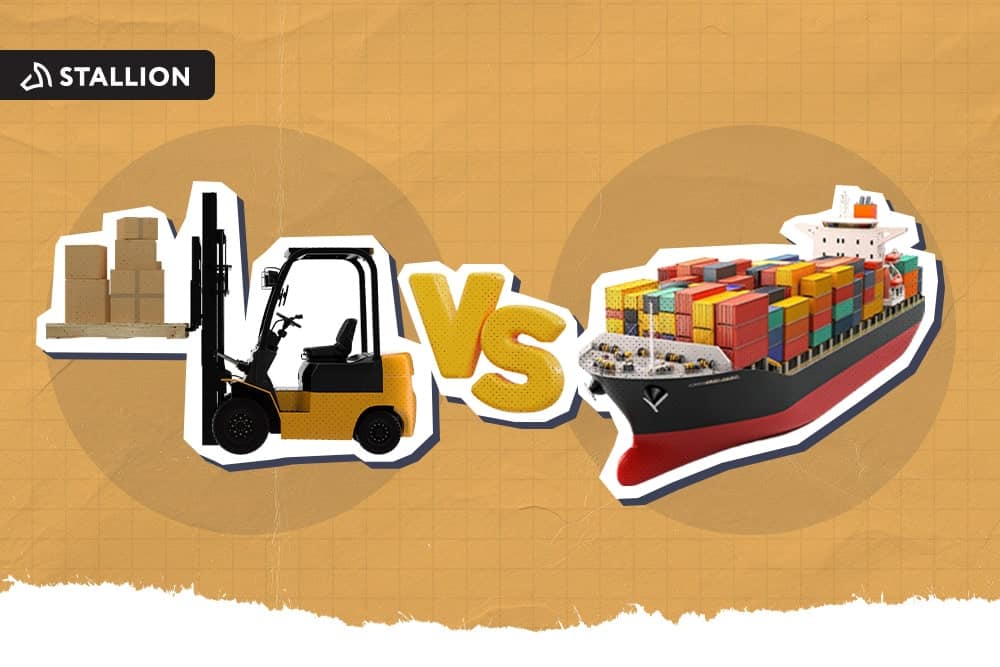
According to Pitney Bowes Parcel Shipping Index, 2,760 parcels are shipped globally every second. That's a total of 9,936,000 per hour! As a seller, you can't help but imagine shipping personnel handling hundreds of millions of packages every day. With all those packages passing from hand to hand, there's definitely room for error. So, there's no doubt that shipping insurance is a must. But the fundamental question you must ask yourself is: "Should I add shipping insurance from a carrier or third-party?"
Let's find out in this article.
You can procure it from your chosen carrier or a third-party company. But take note that carriers only offer declared value coverage and not insurance. You can get the latter from a third-party shipping insurance company.
Major international carriers reiterated this like FedEx. Based on their Terms and Conditions, it is clearly stated that they do not provide insurance coverage in any kind. Moreover, declared value coverage, which is also called bare minimum carrier insurance, is a carrier's maximum liability for that package in the event of damage or loss.
On the other hand, third-party shipping insurance or "all-risk" cargo insurance, is the most comprehensive and straightforward form of coverage between the two.
Whether it is a declared value coverage or third-party shipping insurance, your decision must be based on your type of e-commerce business because there's no one size fits all approach. It depends on the value of your products and shipping volume.
For example, if you are shipping in bulk or it consists of expensive items, then shipping insurance is a must. International shipping also creates unpredictable risks because of how long it takes the packages to be delivered, and specific countries where delivering packages is less reliable.
Adding shipping insurance also gives you peace of mind and saves you from replacement costs. According to the 2019 Package Theft Statistics report with 2,000 respondents, 36% have reported having a package stolen and found out that the average cost to replace a stolen item is US$109. So, when in doubt, it’s better to avail shipping insurance to avoid additional stress because of damage, loss, or stolen goods. Since the cost of not having one could taint your reputation as a seller.
Now, let us differentiate between carrier and third-party insurance to determine which will offer the best value for your money:
Filing a claim
In declared value insurance, you need to file a claim with your carrier personally. This includes the time-consuming gathering and submitting of documentation to prove that the item is lost, damaged, or stolen. But with third-party shipping insurance, they are willing to do it on your behalf. They will even assign an in-house representative that will handle your claim, and some have a system where you can file claims online.
Turnaround time
Few major carriers, like FedEx and UPS, may take a while in processing your claim. It usually takes an average of 7-10 business days to search for a lost package. If it is not located, it is only then they will send an authorization letter and when you can submit your supporting documents. It takes 5-7 business days to resolve it.
You will never experience this with third-party insurance because the waiting time is only 3-5 working days and paid via check or electronically.
Insurance coverage
What does shipping insurance cover? If you choose a carrier declared value coverage, they will provide an automatic US$100 coverage for free. But if it is above US$100, you need to report the value and buy additional shipping insurance coverage.
The minimum insurance fee is US$3 for FedEx and $1.05 for UPS. So, when you ship a package worth US$101 with UPS, the first US$100 is free, but you will pay US$1.05 for its remaining US$1.
In contrast with third-party insurance, it offers full-coverage protection for all your declared values that includes all risks due to loss or damage. Besides, "all-risk" shipping insurance is cheaper than bare minimum carrier insurance.
Here are other things you need to know when it comes to shipping insurance:
It is a third-party application where you can buy the shipping insurance for a lost, damaged, or stolen shipment. Route accepts any licensed carrier, and the cost of shipping insurance is only 1.5% of the cart value.
Many insurance companies do not cover cash, coins, or precious stones. Couriers and third-party shipping insurance may not honor your claim if they found out that your package is not packed correctly. Also, it may not be available in specific origin and destination countries.
The sooner, the better. Please take note of your insurer's cutoff time and file it the moment you find it out.
FedEx gives you within 60 days to file a claim while for UPS, you have five months for shipments within the U.S., and within 60 days after delivery for international shipments.
If you choose "all-risk" cargo insurance, you should ask them first as it differs from one company to another.
You must expect the unexpected when it comes to order fulfillment, specifically when shipping. If the package hasn't reached its destination yet, your mission of making your customers happy and satisfied is not yet completed. Unfortunately, at this point, you cannot personally supervise the shipping process. This is when you consider asking yourself, "Should I add shipping insurance?" And make sure to carefully weigh which is the right shipping insurance for you: carrier or third-party insurance?
If you're stuck at answering the "should I add shipping insurance" question, let Stallion Express help and guide you. We provide cost-effective full coverage at the lowest prices. For inquiries, you can call +1 877-863-7447 or email [email protected].



Can our fellow Torontonians relate?
-
#smallbusiness #business #entrepreneur #socialmedia #shipping #ecommerce #canadianecommerce #shopify #poshmark #b2b #saas #etsy #ebay #canada #canadiansmallbusiness #shoplocalcanada #entrepreneur
#toronto

Here’s your quick hassle free shipping from 🇨🇦 to 🇺🇸 as a business owner!
-
Any questions?! Leave them 👇🏻 and save this video so you don’t forget!
-
#smallbusiness #business #entrepreneur #socialmedia #shipping #ecommerce #canadianecommerce #shopify #poshmark #b2b #saas #etsy #ebay #canada #canadiansmallbusiness #shoplocalcanada #entrepreneur

Meet @drinkbenny a 🇨🇦 female founded energy drink brand! Instead of focusing on their products, they’re taking a unique approach by hosting in person events in different Canadian cities to offer an experience for their community 🧡
-
What are your thoughts on in person events? 💭
-
#smallbusiness #business #entrepreneur #socialmedia #shipping #ecommerce #canadianecommerce #shopify #poshmark #b2b #saas #etsy #ebay #canada #canadiansmallbusiness #shoplocalcanada #entrepreneur

Do you know the difference between DDU and DDP when shipping internationally 🌏 ?
-
Questions? Leave them below! 👇🏻
-
#smallbusiness #business #entrepreneur #socialmedia #shipping #ecommerce #canadianecommerce #shopify #poshmark #b2b #saas #etsy #ebay #canada #canadiansmallbusiness #shoplocalcanada #entrepreneur

Here’s a quick hack to save time from choosing multiple postage options
↪️ Turn on the lowest postage rate automation to save you time!
-
Questions? Leave them below! 👇🏻
-
#smallbusiness #business #entrepreneur #socialmedia #shipping #ecommerce #canadianecommerce #shopify #poshmark #b2b #saas #etsy #ebay #canada #canadiansmallbusiness #shoplocalcanada #entrepreneur
